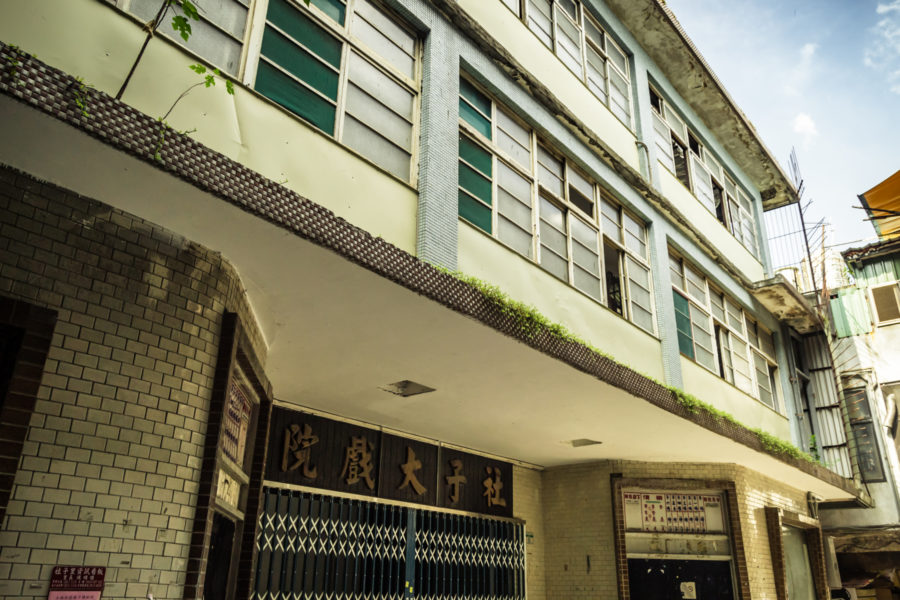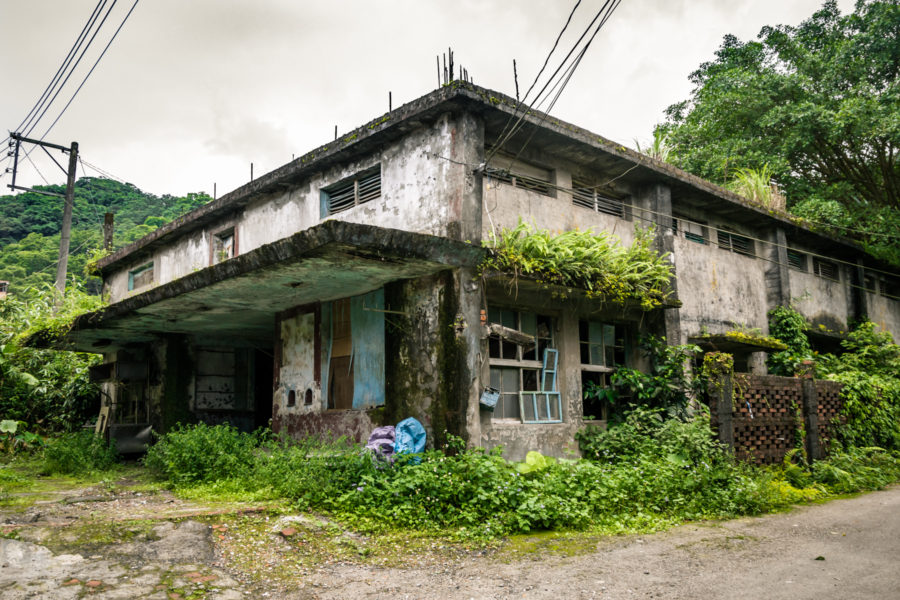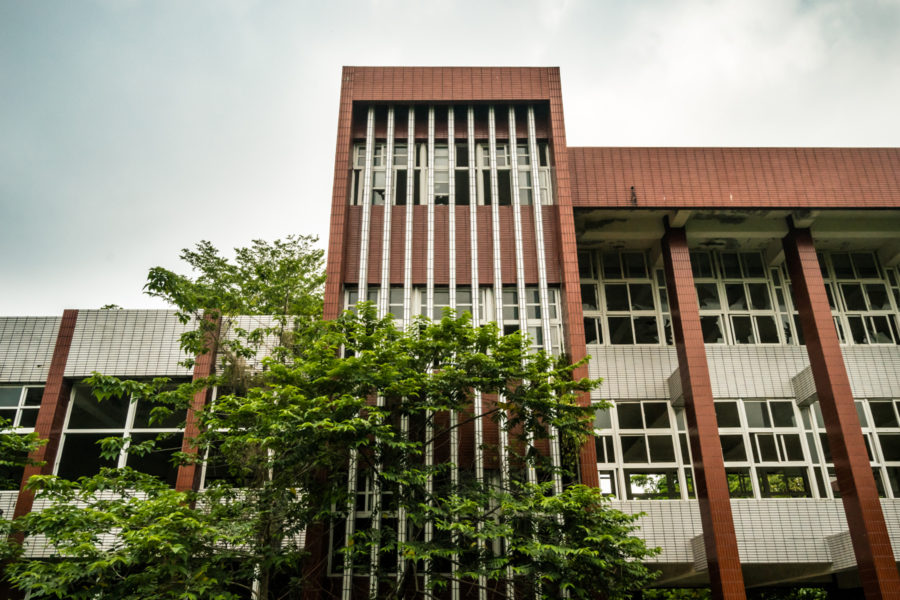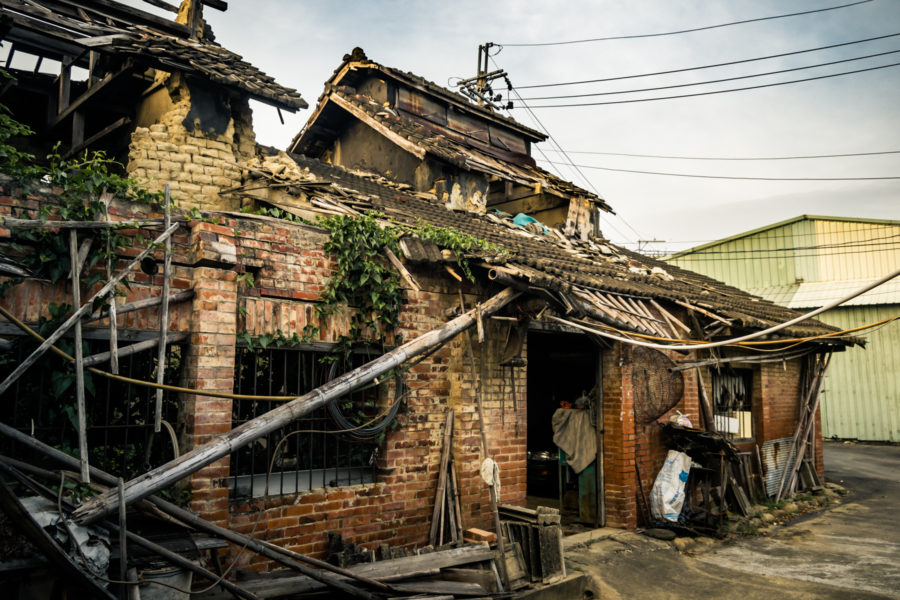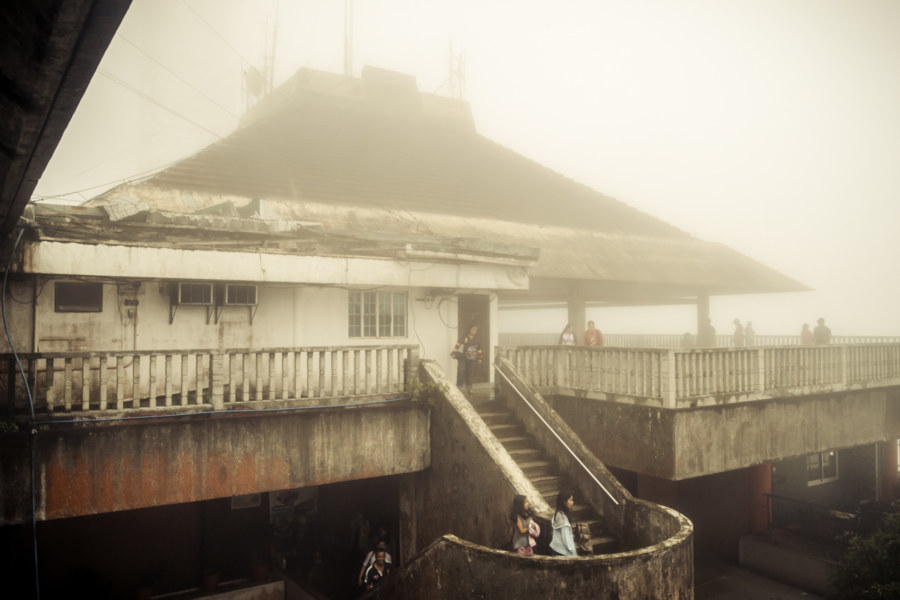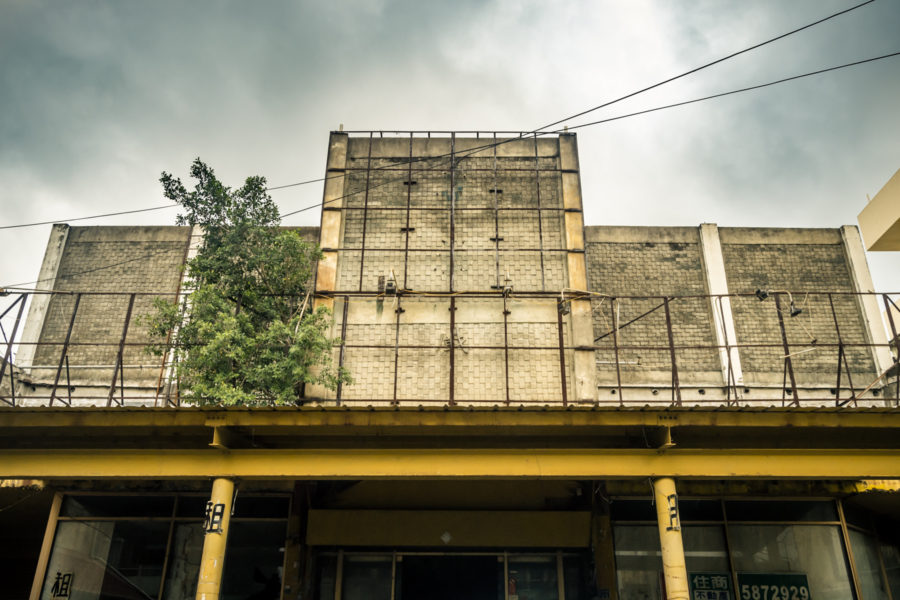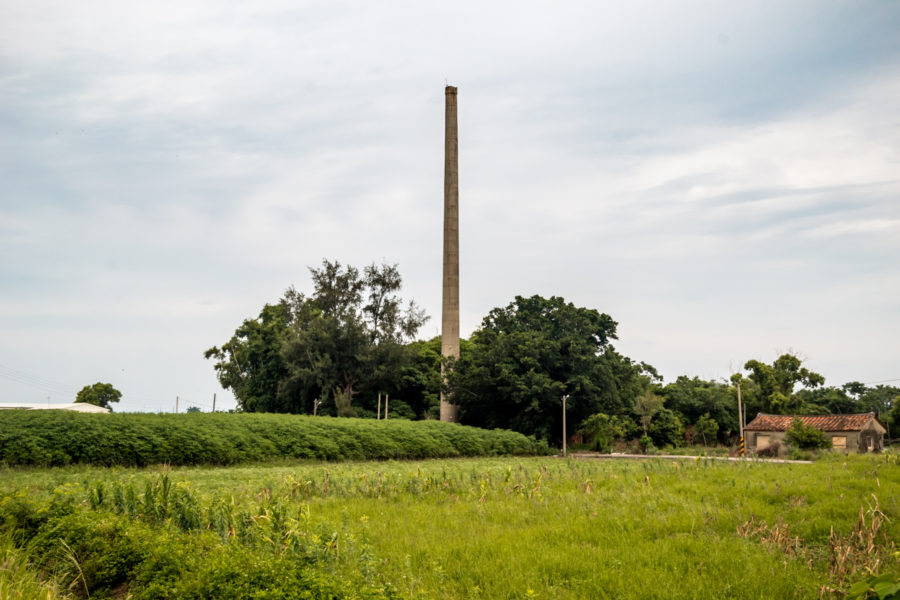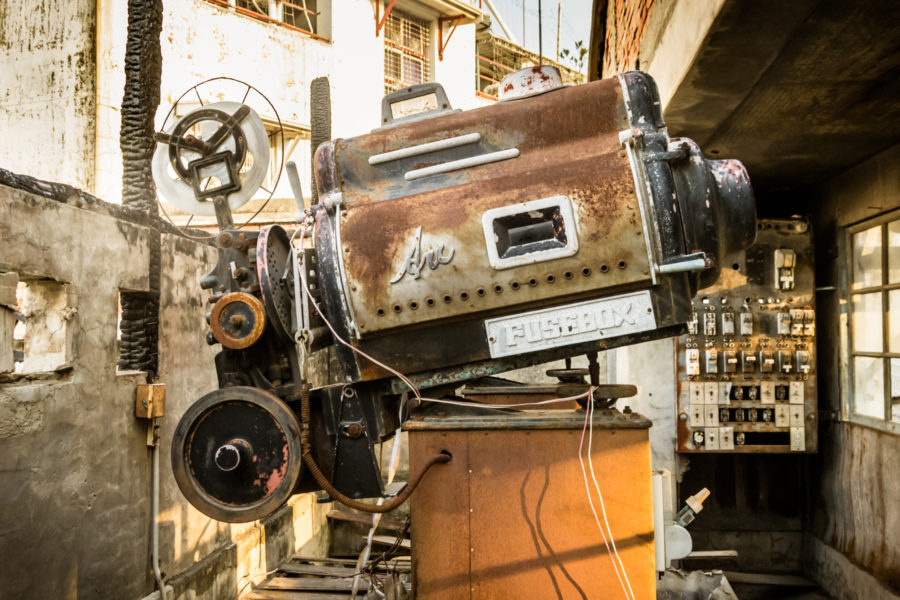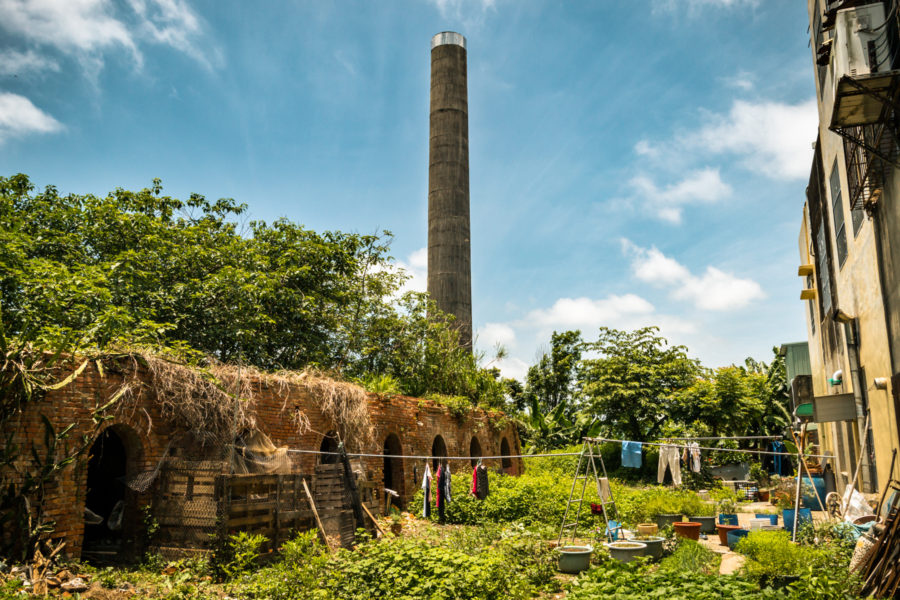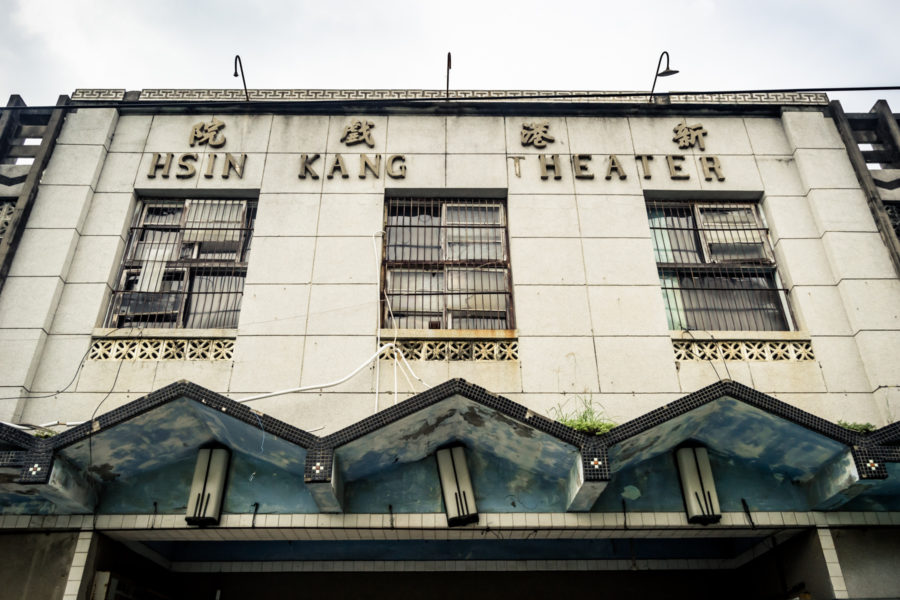Shèzi Theater 社子大戲院 was founded in 1965 as the first open-air theater in Taipei. Located in southwestern Shilin, it was a fairly informal venue from the sounds of it: an empty lot surrounded by bamboo fencing with films projected on a single screen for up to 500 people every night, stars wheeling overhead. Within three years of opening the owners reinvested some of their profits in filling out the space, adding a balcony level and some rudimentary shelter from the elements. Eventually the theater moved into a more permanent building on the same site, perhaps as late as 1976, when it first appears in business records. The rise of home video in the 1980s gravely impacted the theater business, leading the owners to divide the cinema into two halls, but there was no way to survive the new economy. Shezi Theater closed in 1996, another victim of changing consumer habits in Taiwan.
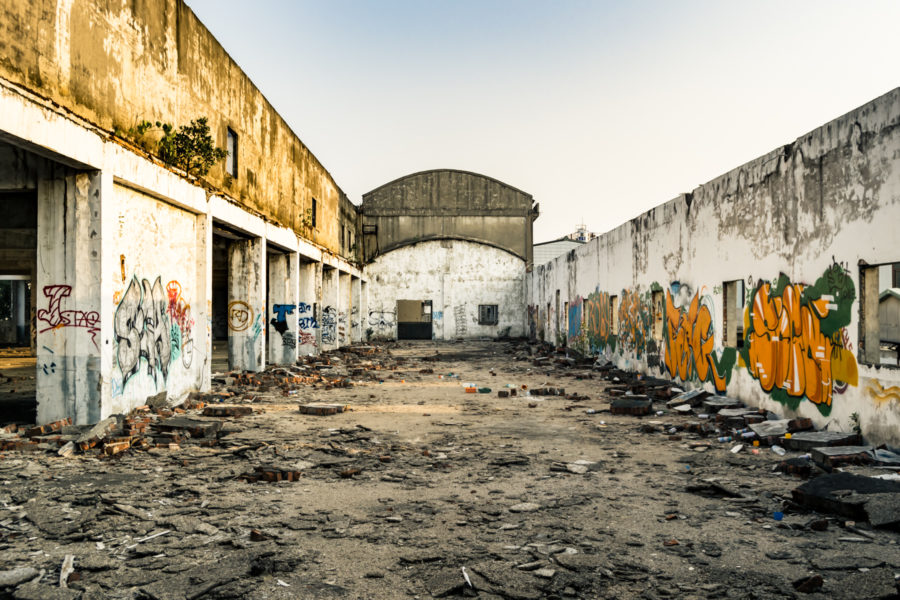
Abandoned buildings and other manmade structures left to the elements. Here I will share the results of various expeditions I have undertaken around the world. See also: urbex, rewilding, and the entire abandoned Taiwan series.
Adjacent Terms
Shifen Luxing Theater 十分陸興戲院
Lùxìng Theater 陸興戲院 was one of the very first abandoned buildings I explored in Taiwan after arriving back in 2013. I had only been in Taipei for about a week when I took a day trip out to Pingxi, a popular tourist destination in New Taipei, and disembarked from the train at Shífēn Station (十分車站) on a whim. Everyone else on the train had the same idea—which meant the narrow street leading east to Shifen Waterfall (十分大瀑布), reputedly one of finest in the Greater Taipei Area (and my intended destination), was immediately overwhelmed with pedestrian traffic.
Yixin Vocational High School 益新工商職業學校
Yìxīn Vocational High School (益新工商職業學校) is a relatively obscure but not entirely unknown ruin in central Taiwan. Located along the main road running through Linnei, Yunlin, it seems to have been abandoned in the aftermath of the devastating 921 Earthquake, nearly two decades ago. Many schools were destroyed in the quake and scores more were condemned (most famously an entire university campus in Dongshi) but whether this particular school suffered the same fate isn’t certain.
Dongping Tobacco Barn 東平菸樓
Only traces remain of the tobacco cultivation and manufacturing industry in Taichung, Taiwan. For the better part of a century tobacco was cultivated across wide swathes of the Taichung Basin 台中盆地, cured on location, sold at regional marketplaces, and shipped to factories for further processing into cigarettes and other tobacco products. Taiwan’s accession to the WTO in 2002 marked the end of domestic tobacco production but the industry was already in steep decline, a consequence of globalization and the end of the government monopoly system in preceding decades. Several buildings related to Taichung’s tobacco industry have earned heritage status in recent years—but this decaying tobacco barn hidden down an laneway in Taiping, a suburban district on the eastern side of the burgeoning metropolis, is not among them.
People’s Park in the Sky
People’s Park In The Sky is a peculiar attraction located about 60 kilometers south of Manila in Tagaytay, a popular leisure destination in the province of Cavite in the Philippines. Perched on top of Mount Sungay at an elevation of 709 meters, the highest point on the northern rim of the immense Taal Caldera, it was originally planned to be a palace suitable for state visits during the kleptocratic reign of Ferdinand Marcos. Construction began in 1979 with a drastic leveling of the mountaintop, which previously reached 759 meters, but ground to a halt with increasing civic unrest and the cancellation of Ronald Reagan’s state visit in 1983. Following the People Power Revolution of 1986 the unfinished mansion was transformed into a public park and monument to the greed, corruption, and excess of the Marcos era.
Xiluo Huasheng Theater 西螺華聲戲院
Xiluo is justifiably famous for Xiluo Theater, the Japanese colonial era theater located close to the architectural wonders of Yánpíng Old Street 延平老街, but this small town on the south bank of the sluggish Zhuóshuǐ River 濁水溪 was once home to two additional theaters. Almost no mention of these other theaters can be found except in this news report about a local painter—but while browsing around satellite view on Google Maps I managed to locate Huáshēng Theater 華聲戲院 (also known as Yīshēng Theater 一生戲院).
Shuangxikou Brick Kiln 雙溪口磚窯
Recently I wrote about the Liùjiǎo Brick Kiln 六腳磚窯, an obscure abandonment in rural Chiayi, Taiwan. While attempting to find out more about that kiln I found a reference to a second abandoned kiln in the area, the Shuāngxīkǒu Brick Kiln 雙溪口磚窯, informally named after the closest village in neighboring Puzi. Weeks after visiting the first kiln I returned to scope out the second and—insofar as I can tell—only other remaining brick kiln in this expanse of the Chianan Plain 嘉南平原. It was a hazy, grey day out there so these photos aren’t nearly as nice as those of the other kiln, but in the interest of adding a little something to the historic record I’m sharing them here anyway.
Xinying Chenggong Theater 新營成功戲院
Despite its relative obscurity Xinying is the largest settlement along the railway line between metropolitan Tainan City and Chiayi City. It was the capital of Tainan County prior to amalgamation in 2010 and remains the secondary administrative seat of Tainan. Located on the broad and fertile Chianan Plain, it was also an important transportation hub for the sugar industry, and what remains of the Japanese colonial era sugar factory can still be found on the south side of town. Xinying was also home to half a dozen standalone movie theaters in its heyday, but most have since been demolished. I was fortunate to visit the ruined KMT authoritarian era cinema Chénggōng Theater (成功戲院) in 2017, not long before it was completely destroyed.
Liujiao Brick Kiln 六腳磚窯
Liùjiǎo Brick Kiln 六腳磚窯 was an unexpected discovery while riding from Beigang to Puzi earlier this summer. The chimney is plainly visible from the roadside and the crumbling bulk of the kiln can be discerned in a gap between the row of houses out front. Stopping to take a closer look I went around (and through) the old kiln to document what remains. Liujiao is a rather obscure part of rural Chiayi so I’ve not found any mention of this place online apart from this brief post. Whereas several kilns in various other parts of Taiwan are being preserved this obscure ruin is almost certainly never going to be the object of a conservation effort.
Hsin Kang Theater 新港戲院
Hsin Kang Theater 新港戲院 is located in the small town of Xingang, Chiayi, not far from the famous Fèngtiān Temple 奉天宮. Multiple sources agree it went out of business in 1988—a victim of shifting consumer preferences and demographic changes in small town Taiwan—but the actual age of the building is somewhat uncertain. This academic reference suggests it was founded in 1929, in the midst of the Japanese colonial era, but the theater was almost certainly renovated or completely rebuilt in the post-war period.
